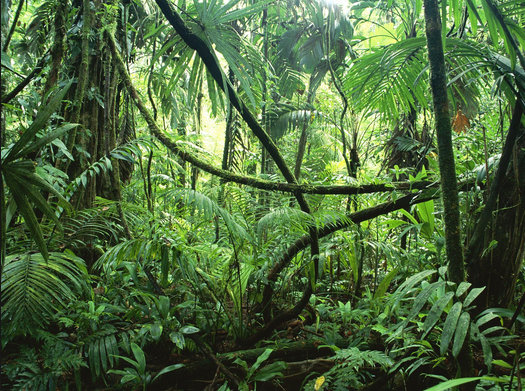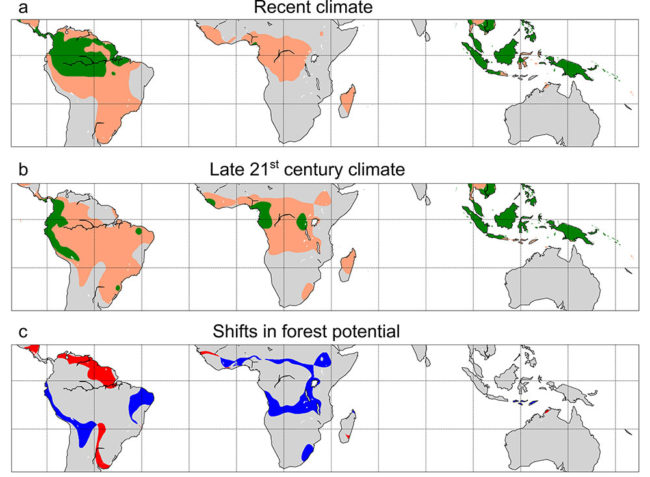
There is a new study that has been published within Nature Communications on Oct 5th, 2020 that examines the topping points of Tropical forests. The essence of it is that a larger part of the Amazon rainforest than previously thought is at risk of crossing a tipping point where it could become a savanna-type ecosystem.
Let’s take a look.
Hysteresis of tropical forests in the 21st century
Hysteresis?
This is where the state of something depends upon its history. In the context of rainforests, the term refers to how these shape their own distributions and create the climatic conditions that enable them.
Rainforests are very sensitive to changes that affect rainfall for extended periods. If rainfall drops below a certain threshold, areas may shift into a savanna state.
“In around 40 percent of the Amazon, the rainfall is now at a level where the forest could exist in either state – rainforest or savanna,”
Arie Staal, formerly a postdoctoral researcher at the Stockholm Resilience Centre and the Copernicus Institute of Utrecht University
Trend expected to worsen
The conclusions are concerning because parts of the Amazon region are currently receiving less rain than previously and this trend is expected to worsen as the region warms due to rising greenhouse gas emissions.
Within the study Staal and colleagues focused on the stability of tropical rainforests in the Americas, Africa, Asia and Oceania.
The team explored the resilience of tropical rainforests by looking at two questions: what if all the forests in the tropics disappeared, where would they grow back? And its inverse: what happens if rainforests covered the entire tropical region of Earth?
- The researchers ran simulations starting with no forests in the tropics across Africa, the Americas, Asia and Australia. They watched forests emerge over time in the models. This allowed them to explore the minimum forest cover for all regions
- The team ran the models a second time, this time in a world where rainforests entirely covered the tropical regions of Earth. This is an unstable scenario because in many places there is not enough rainfall to sustain a rainforest. In many places the forests shrank back due to lack of moisture
- Finally, the researchers explored what happens if emissions keep rising this century along a very high-emissions scenario used by the Intergovernmental Panel on Climate Change (IPCC)

Changing hysteresis of forest cover in the tropics during the 21st century.
- a) Minimal (green) and maximal (beige) forest distributions under recent climate.
- b) Minimal (green) and maximal (beige) forest distributions under the late 21st century climate (2071−2100).
- c) Shifts in forest potential between the recent and late 21st century climates.
Red areas are stable forest under the recent climate, but cross the tipping point into the nonforested rainfall range under the late 21st century climate; blue areas are too dry for forest under the recent climate, but cross the tipping point to the stable-forest rainfall range under the late 21st century climate.
Growing emissions, shrinking rainforest
Overall, the researchers found that as emissions grow, more parts of the Amazon lose their natural resilience, become unstable and more likely to dry out and switch to become a savanna-type ecosystem. They note that even the most resilient part of the rainforest shrinks in area.
“If we removed all the trees in the Amazon in a high-emissions scenario a much smaller area would grow back than would be the case in the current climate,”
co-author and centre researcher Lan Wang-Erlandsson
The researchers conclude that the smallest area that can sustain a rainforest in the Amazon contracts a substantial 66% in the high-emissions scenario.
In the Congo basin the team found that the forest remains at risk of changing state everywhere and will not grow back once gone, but that under a high emissions scenario part of the forest becomes less prone to crossing a tipping point.
But Wang-Erlandsson adds ‘This area where natural forest regrowth is possible remains relatively small.”
Decades to return
“We understand now that rainforests on all continents are very sensitive to global change and can rapidly lose their ability to adapt, Once gone, their recovery will take many decades to return to their original state. And given that rainforests host the majority of all global species, all this will be forever lost.”
co-author Ingo Fetzer
The academics found that the minimal and maximal extents of the rainforests of Indonesia and Malaysia are relatively stable because their rainfall is more dependent on the ocean around them than on rainfall generated as a result of forest cover.
(This posting contains content and materials provided by the Stockholm Resilience Centre)
